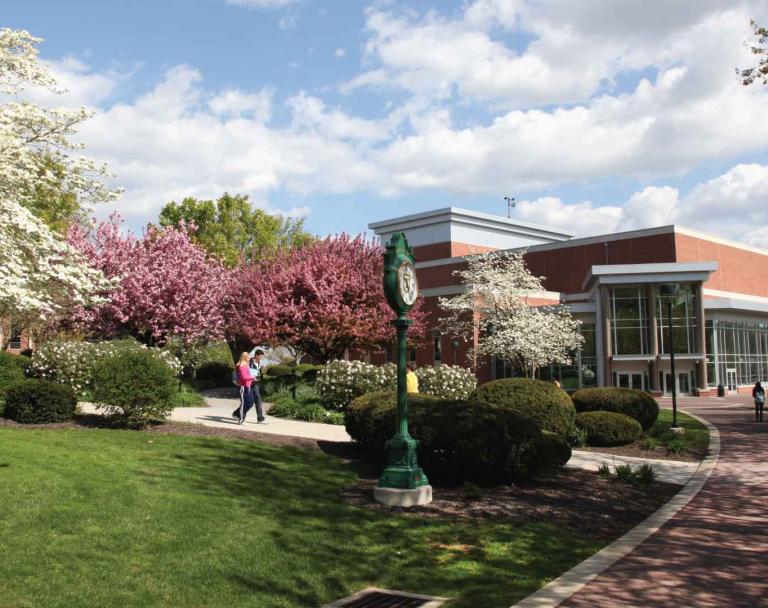Ian Miller

Investigating the Impact of the Battle of Gettysburg on Nature and Agriculture
York College of Pennsylvania senior Ian Miller’s research took him back to the Civil War era and made him wonder how the Battle of Gettysburg had affected the environment.
Ian Miller ’22 didn’t need to spend hours walking around the Gettysburg battlefield to gather information for his project, “Forgotten Losses: Nature and Agriculture at the Battle of Gettysburg.” He says, “I was able to follow common topics and methods used in investigating environmental damages in the southern theaters and translate them to the lesser analyzed northern one. All of this was supported through primary source research on civilian accounts, reports of generals within the Gettysburg Campaign, damage claims, and newspapers.”
Love of history and nature
Initially, Miller planned to investigate soil and water contamination as a result of the Civil War as it is a topic often discussed in reference to modern wars, but not historical ones. “Due to a lack of sources,” he says, “I decided to transition to a case study on Gettysburg…a battle that has not been investigated intensely in an environmental focus.”
He graduated in May as a Chemistry and History dual major, focusing on environmental chemistry and history particularly. He says, “History has always been my passion ever since growing up just outside of Gettysburg, Pennsylvania. I spent my time before college in Boy Scouts, where I earned the Eagle Scout rank, which is where I developed a deep respect for nature and an interest in environmental history and science. I am very much into hiking, camping, and backpacking, along with cooking and winning chili cookoffs… and I will never pass up a trip to a museum, no matter what focus it may have.”
The Department of History and Political Science “helped greatly in preparing me for this research ever since junior year with our History Methods class, in which we set up a possible senior research project and completed the initial part of our research, our historiographical review.” Beyond that, he says several professors, spearheaded by Dr. Corey Brooks and Dr. Peter Levy, aided in advising him through this research, whether it was extensive feedback on drafts, loaning books, pointing him toward new sources, or brainstorming with him when obstacles presented themselves.
Shifting focus
Going into this research, Miller’s focus was going to be on the aftermath of the Battle of Gettysburg, impacts on farms, agriculture, and the general landscape, partnered with a discussion of epidemic disease as a result of war.
The first hurdle, he says, “was that no sources discussed an epidemic at Gettysburg, and the official report of the era from the United States Surgeon General only listed around a dozen Union and Confederates soldiers combined as having died directly from disease. As Gettysburg was the largest battle of the war, and left approximately 10,000 soldiers killed with another 30,000 to 40,000 wounded or captured, I expected such a situation after battle to be primed for mass illness. Because it seemed the people of Gettysburg employed extensive precautionary practices, my focus had to shift to investigating why Gettysburg avoided epidemic unlike the mass illness often seen in southern theaters.”
There were many challenges, especially with finding a strong foundation of primary sources in a setting where facilities and archives were just beginning to open back up from COVID. Miller says, he “was unfortunate enough to begin research at a time when the Adams County Historical Society was moving to a new, larger facility, meaning their archives were packed up and closed until spring 2023.” This initial shortage on sources was exacerbated by the Gettysburg National Military Park Library and Resource Center remaining closed due to COVID and a lack of full-time staff, with both locations having no fully digitized databases. This meant the civilian accounts Miller pulled had to be found in other works, but large enough to be considerable and significant for his, paired with more research through newspapers and the reports of military officers and generals.
Dr. Brooks says, “Ian offers a fresh look at the aftermath of the Battle of Gettysburg, applying insights from environmental histories of the Civil War (which mostly focus on longer campaigns on southern soil) to explore the physical devastation that battle brought to the Gettysburg landscape, as well as the surprisingly effective disease control efforts the community implemented when confronted with 10,000 human corpses and 3,000 equine corpses to inter or incinerate.”
A remarkable achievement
After all these challenges, Miller is most proud of being able to complete an extensive research project on something so close to where he grew up and looking at nature, something he cares deeply about, and being able to “start a discussion on research that hasn’t been delved into deeply yet.”
He says, “The research I did here helped to greatly refine the writing and analysis skills I have developed throughout my education in history.”
Currently, he says he “would love to complete all the certifications and tests to become a tour guide at Gettysburg or another major historical location/museum in the future.” As of now, he has a position as a Product Development Chemist working in an R&D lab at Adhesives Research, where he interned last summer. That being said, Ian adds, “history will still remain a huge hobby of mine, and something I hope to be able to bring into a career eventually.”

